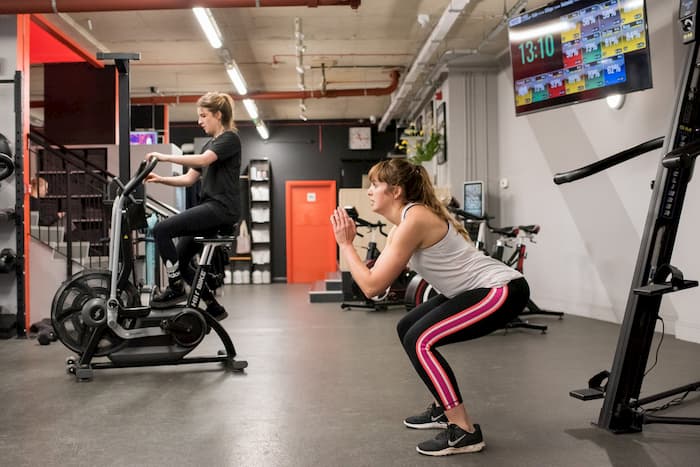The squat should executed with good form should look almost graceful. Done badly however, it looks terrible! The perfect squat requires full range of motion of the ankle, knee and hip whilst testing the strength of both the legs and back. If you are strong but immobile, then the squat will not look great, as you won’t be able to achieve the required depth.
Similarly, if you are mobile but not strong the squat looks equally as bad as you will achieve depth but will not have the strength to move out from the bottom position. A good squat requires the perfect mix of mobility, stability and strength and this is why I love it as an exercise for most people.
So what does the perfect squat look like?
The perfect squat will have you maintain a straight and upright back position whilst you sit down ‘ass to grass’ and stand back up again with your weight on your heels throughout.
It is very rare for me to see somebody fail a squat with the legs, especially in beginners. The limiting factor is usually form through the trunk that fails first. Here are the two most common errors and ways to fix them.
Weight is on the toes
When your weight drifts to your toes, usually in the bottom position, it means the weight has fallen forward a little bit. With the weight on your toes it is much harder for your glutes to get involved in the lift and trust me you need these guys working. The main reason for your weight going to your toes is that you are squatting through your knees, and by this I mean you are not sitting your weight back enough.
One drill I like for teaching how to sit back is the floating toes squat. I use this as a warm up drill to teach keeping the weight on your heels.
Stand on two plates and have your toes hanging off the edge. Now perform squats keeping the weight on your heels. You can perform this with weight but keep it light.
Your upper back is relaxed
The recipe of a relaxed upper back and heavy bar resting on the shoulders usually equates to something that reminds of the first time I tried to make chickpea pasta. Weak, limp and after eating it was hard to stand up.
To stop this happening then you need to grip the bar hard and pull it into your back, engaging the lats. Squeeze your shoulder blades together and inflate your ribcage, which elevates your chest. Now your goal is to maintain this throughout the lift.
Remember, the squat is a full body exercise, and as the weight that you lift gets heavier, you need to get stronger – not just in the legs but everywhere!
Correct Squat Technique
Squat Technique: Part 1
Squat Technique: Part 2
If you have any questions on the above or would like some advice on how we could help you with your fitness goal, don’t hesitate, visit our Old Street personal training gym and try one of our personal fitness training sessions.
Related Articles:
- Squat Four Ways
- Squat to Improve Your Fitness
- Incorporating Squats into Your Strength Training
- Beginners Guide to the Squat
- Are Squats Bad for My Knees?

